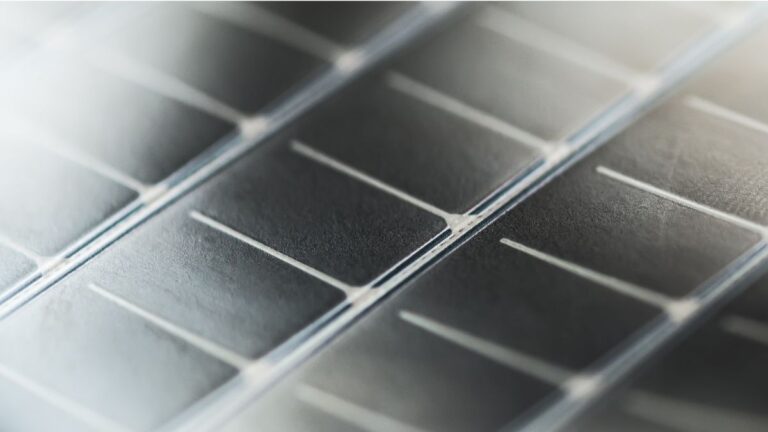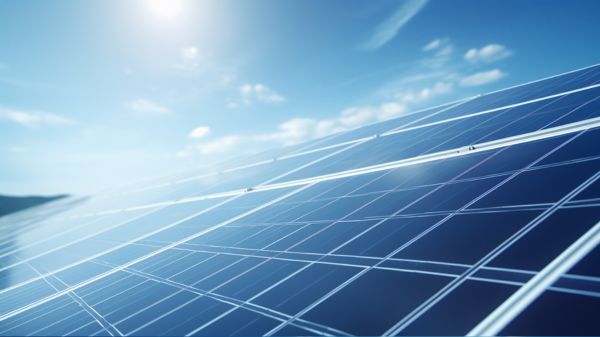10 Best Breakthroughs in Photovoltaic Cell Design
Did you know that photovoltaic cell design has undergone significant breakthroughs? In fact, there are now ten remarkable advancements that have revolutionized the field.
From multijunction solar cells to tandem solar cell technology, these innovations have greatly improved the efficiency and performance of photovoltaic cells. In this article, we will explore these top ten breakthroughs in detail, providing you with the technical knowledge and analytical insights you desire.
Join us as we delve into the exciting world of photovoltaic cell design and discover the possibilities for a brighter future.
Key Takeaways
- Multijunction solar cells and tandem solar cell technology are breakthroughs in photovoltaic cell design that utilize multiple semiconducting materials to achieve higher efficiency levels and capture a broader spectrum of sunlight, improving performance in various applications.
- Perovskite photovoltaic cells and quantum dot solar cells are promising breakthroughs that offer high efficiency, cost-effectiveness, and stability. Ongoing research aims to enhance their durability and mass production potential for widespread adoption.
- Organic photovoltaic cells, nanostructured solar cells, and dye-sensitized solar cells are breakthroughs that offer remarkable durability, flexibility, and customization options. They utilize abundant and non-toxic materials, aligning with sustainability ideals.
- Cost reduction strategies, such as material optimization, scalability, integration with existing infrastructure, and constant exploration of new materials and manufacturing processes, are driving advancements in photovoltaic cell design and making renewable energy generation more affordable and marketable.
Multijunction Solar Cells
When considering the best breakthroughs in photovoltaic cell design, you can’t overlook the significant advancements made in the field of multijunction solar cells.
Multijunction solar cells are a type of photovoltaic cell that utilize multiple semiconducting materials to achieve higher efficiency levels compared to traditional single-junction cells.
The key advantage of multijunction solar cells lies in their ability to capture a broader spectrum of sunlight, thereby maximizing the conversion of sunlight into electricity.
This increased efficiency translates into higher power output and improved performance in various applications, including space-based solar power and concentrated photovoltaic systems.
Additionally, multijunction solar cells have seen significant cost-effectiveness advancements in recent years, making them more accessible and appealing to a wider range of users. These advancements have been achieved through improved manufacturing processes, material selection, and overall system design.
Perovskite Photovoltaic Cells
Perovskite photovoltaic cells have gained significant attention in recent years due to their high efficiency, cost-effectiveness, and potential for durability. These cells are made from a unique class of materials called perovskites, which exhibit exceptional light-absorbing properties.
With efficiency levels surpassing traditional silicon-based cells, perovskite cells offer a promising solution for achieving higher energy conversion rates at a lower cost. Additionally, ongoing research is focused on enhancing the durability and stability of perovskite cells to ensure their long-term viability in various environmental conditions.
Efficiency of Perovskites
To improve the efficiency of your photovoltaic cells, it’s crucial to explore the advancements made in perovskite technology.
Perovskite photovoltaic cells have gained significant attention due to their potential to achieve high power conversion efficiencies. However, there are durability challenges and stability concerns that need to be addressed in order to ensure their long-term performance.
One of the main durability challenges is the sensitivity of perovskite materials to moisture and oxygen, which can lead to degradation and reduced efficiency over time. Researchers are actively working on developing encapsulation techniques and barrier layers to protect the perovskite layers from environmental factors.
Additionally, stability concerns arise from the fact that perovskite materials can exhibit hysteresis in their current-voltage characteristics, causing variations in performance under different operating conditions.
Efforts are being made to understand and mitigate this hysteresis effect to improve the overall efficiency and stability of perovskite photovoltaic cells.
Cost-Effectiveness of Perovskites
Achieving cost-effectiveness in perovskite photovoltaic cells requires careful consideration of various factors.
To fully realize the potential for mass production and widespread adoption, the durability of perovskites must be addressed. This is crucial in order to ensure the longevity and reliability of the cells, reducing the need for frequent replacements and maintenance.
Additionally, the scalability of the manufacturing process plays a significant role in cost-effectiveness. The ability to produce perovskite cells at a large scale and with high efficiency can drive down production costs, making them more accessible and affordable.
Lastly, the overall performance and efficiency of perovskite photovoltaic cells also contribute to their cost-effectiveness. By maximizing the conversion of sunlight into electricity, the cells can generate more energy and offer a greater return on investment.
Durability of Perovskites?
Addressing the durability of perovskites is crucial for ensuring the long-term reliability and performance of photovoltaic cells. Perovskite photovoltaic cells have gained attention for their high efficiency and low cost, but their long-term performance and environmental impact remain important considerations.
Despite their promising potential, perovskite materials have been known to degrade over time due to exposure to moisture, oxygen, and heat. To improve their durability, researchers have been exploring various strategies such as encapsulation techniques, protective coatings, and material engineering. These efforts aim to enhance the stability of perovskite cells and extend their lifespan, which is essential for their commercial viability.
Additionally, considering the environmental impact of perovskite production and disposal is crucial for the sustainable development of photovoltaic technologies. By addressing the durability of perovskites, we can ensure their long-term performance while minimizing their environmental footprint.
Tandem Solar Cell Technology
With the introduction of tandem solar cell technology, you can now significantly increase the efficiency and performance of your photovoltaic cells. Tandem solar cells are a type of multi-junction solar cell that combine multiple semiconductors with different bandgaps to capture a broader spectrum of sunlight.
This innovative design allows for a higher energy conversion efficiency compared to traditional single-junction cells. Here are three reasons why tandem solar cell technology is a breakthrough in photovoltaic design:
- Improved efficiency: Tandem cells can achieve higher efficiencies by utilizing multiple layers of semiconductors that each absorb a different portion of the solar spectrum. This enables the cells to convert a larger percentage of sunlight into electricity.
- Enhanced durability: The use of multiple layers in tandem cells provides added protection against degradation and damage. This increases the overall lifespan and reliability of the cells, ensuring long-term performance.
- Potential for efficiency improvement: Tandem cells have the potential to achieve even higher efficiencies in the future as researchers continue to optimize the design and explore new materials. This means that your photovoltaic system can become even more efficient over time.
Thin-Film Photovoltaic Cells
To further enhance the efficiency and durability of your photovoltaic cells, consider exploring the benefits of utilizing thin-film photovoltaic technology. Thin-film photovoltaic cells offer several advantages over traditional silicon-based cells.
One of the main benefits is their flexibility, which allows for easier integration into various applications such as building materials, vehicles, and portable devices.
However, thin-film photovoltaic cells also face durability challenges due to their delicate nature. They’re more sensitive to external factors such as moisture and temperature changes, which can affect their performance over time.
To address these challenges, manufacturers are continuously improving their manufacturing techniques. Advanced deposition processes, such as sputtering and chemical vapor deposition, are used to create thin, uniform layers of semiconductor materials on flexible substrates.
These techniques ensure better adhesion and protection against environmental factors, increasing the durability and lifespan of thin-film photovoltaic cells.
Quantum Dot Solar Cells
You may be interested in exploring the efficiency of quantum dot solar cells and their potential for mass production.
Quantum dots, with their unique size-dependent electronic properties, have shown great promise in enhancing the performance of photovoltaic cells.
By harnessing the quantum confinement effect, these cells can achieve higher conversion efficiencies and offer a cost-effective solution for renewable energy generation.
Additionally, the scalable production methods of quantum dots make them a viable candidate for large-scale manufacturing, further driving their adoption in the solar industry.
Efficiency of Quantum Dots
One key breakthrough in photovoltaic cell design is the significant improvement in efficiency achieved through the use of quantum dots in quantum dot solar cells.
Quantum dots are nanoscale semiconductors that have unique properties, making them ideal for applications in solar cells. They offer a wide range of possibilities due to their tunable bandgap, which allows for the absorption of light at different wavelengths. This means that quantum dot solar cells can harvest a broader spectrum of light, increasing their overall efficiency.
Additionally, quantum dots have shown remarkable stability, enabling them to maintain their performance over a longer period of time. This stability is crucial for the longevity and reliability of solar cells.
Potential for Mass Production
Researchers have made significant advancements in improving the efficiency of photovoltaic cells through the use of quantum dots, and now it’s time to explore their potential for mass production. Quantum dot solar cells have shown great promise in terms of mass production potential and cost reduction potential.
The unique properties of quantum dots, such as their size-tunable bandgap and high absorption coefficient, make them ideal candidates for large-scale production.
By leveraging economies of scale, manufacturers can benefit from reduced production costs, making quantum dot solar cells more affordable for consumers.
Additionally, the ability to fabricate quantum dots using low-cost materials and processes further contributes to the potential for mass production.
As researchers continue to refine the manufacturing techniques and optimize the performance of quantum dot solar cells, the future looks bright for their widespread adoption.
Organic Photovoltaic Cells
Organic photovoltaic cells have increasingly gained popularity due to their improving efficiency and growing affordability. As the demand for renewable energy sources continues to rise, these cells offer a promising solution with their unique properties.
Here are three reasons why organic photovoltaic cells are becoming the go-to choice for many:
- Durability: Organic cells have shown remarkable durability, with some prototypes maintaining their efficiency levels for over a year. This longevity bodes well for their practical application and makes them a reliable option for long-term energy generation.
- Potential for mass production: Unlike traditional silicon-based solar cells, organic cells can be manufactured using low-cost, scalable methods. This potential for mass production not only drives down the overall cost of the technology but also enables widespread adoption, making renewable energy accessible to more people.
- Environmental friendliness: Organic photovoltaic cells are made from abundant and non-toxic materials, reducing the environmental impact associated with their production and disposal. This eco-friendliness aligns with the ideals of many individuals who desire to contribute to a sustainable future.
With their durability and potential for mass production, organic photovoltaic cells offer an exciting avenue for the widespread adoption of renewable energy, providing a sense of belonging to a community committed to a greener future.
Nanostructured Solar Cells
Nanostructured solar cells offer a significant advancement in photovoltaic cell design due to their enhanced efficiency and unique structural properties. These cells are characterized by the presence of nanostructures, such as nanowires or nanorods, which greatly enhance their light absorption capabilities. By utilizing these nanostructures, nanostructured solar cells can achieve higher efficiencies compared to traditional solar cells.
Additionally, the unique structural properties of nanostructured solar cells provide them with improved durability. The nanostructures act as a protective layer, shielding the active materials from external factors that can degrade their performance over time. This increased durability makes nanostructured solar cells more resistant to environmental stressors, ensuring their longevity and reliability.
Furthermore, the potential for efficiency improvement in nanostructured cells is immense, as ongoing research aims to optimize the design and fabrication processes. By continually refining the nanostructure morphology and composition, researchers are striving to achieve even higher efficiencies and make nanostructured solar cells a viable and sustainable energy solution.
Dye-Sensitized Solar Cells
Dye-sensitized solar cells offer significant improvements in efficiency, versatility in design, and potential for cost reduction.
With their ability to capture a wider range of light wavelengths and convert them into electricity, these cells can achieve higher conversion efficiencies than traditional silicon-based solar cells.
Additionally, the flexible and customizable nature of dye-sensitized cells allows for integration into various applications, including building-integrated photovoltaics.
Furthermore, the use of abundant and low-cost materials in their production holds promise for reducing the overall cost of solar energy generation.
Efficiency of Dye-Sensitized Cells
You can improve the efficiency of dye-sensitized solar cells by implementing recent breakthroughs in photovoltaic cell design. These advancements have focused on enhancing the durability of dye-sensitized cells, allowing them to withstand harsh environmental conditions and extend their lifespan. By increasing the cell’s resistance to degradation, it becomes a more reliable and long-lasting option for renewable energy generation.
Furthermore, the applications of dye-sensitized cells in building integrated photovoltaics have gained significant attention. These cells can be seamlessly integrated into the architecture of buildings, providing a sustainable and aesthetically pleasing solution for renewable energy production. This integration not only improves the efficiency of the cells but also promotes a sense of belonging to a community that values sustainability and clean energy.
Versatility in Design
To enhance the versatility of dye-sensitized solar cells, implement recent breakthroughs in photovoltaic cell design that offer a wide range of design options to suit various applications.
These advancements provide flexibility in design and customization options, allowing for tailored solutions that meet specific needs.
One notable breakthrough is the introduction of multi-colored dyes, which enable the creation of cells with different absorption spectra. This opens up possibilities for optimizing energy conversion in different lighting conditions.
Additionally, the development of flexible substrates allows for the integration of dye-sensitized cells into curved or irregular surfaces, expanding their potential applications in architecture and wearable technology.
Furthermore, advancements in manufacturing techniques have made it possible to create cells of varying sizes, offering greater design freedom. The table below summarizes the key design options and their benefits:
| Design Option | Description | Benefits |
|---|---|---|
| Multi-colored dyes | Dyes with different absorption spectra | Optimize energy conversion in various lighting conditions |
| Flexible substrates | Integration into curved or irregular surfaces | Expanded applications in architecture and wearable technology |
| Varying cell sizes | Cells of different sizes | Greater design freedom |
Potential for Cost Reduction
With the potential for cost reduction, the breakthroughs in photovoltaic cell design discussed previously offer a more affordable option for renewable energy generation. Dye-sensitized solar cells (DSSCs) have emerged as a promising technology in this regard, providing cost-effective solutions for harnessing solar energy.
Here are three cost reduction strategies that highlight the market potential of DSSCs:
- Material optimization: Researchers are constantly exploring new materials and manufacturing processes to reduce the cost of DSSCs. By finding alternatives to expensive materials like platinum and ruthenium, the overall production costs can be significantly lowered.
- Scalability and mass production: DSSCs have the potential for large-scale production due to their simple design and manufacturing techniques. This scalability can lead to economies of scale, reducing the cost per unit and making them more competitive in the market.
- Integration with existing infrastructure: By integrating DSSCs into existing infrastructures, such as building facades or windows, the cost of installation can be minimized. This integration also opens up new markets for DSSCs, increasing their market potential.
Hot Carrier Solar Cells
One of the most significant breakthroughs in photovoltaic cell design is the utilization of hot carrier solar cells. These cells are capable of achieving higher energy conversion efficiencies compared to conventional solar cells by harnessing the energy of hot carriers generated during the absorption of sunlight.
This innovative technology involves the extraction of hot carriers before they lose their excess energy through thermalization. By utilizing hot carrier solar cells, it’s possible to achieve higher efficiency and improve the overall performance of solar energy systems.
Additionally, the integration of dual-axis tracking systems further enhances the efficiency of hot carrier solar cells by maximizing their exposure to sunlight throughout the day. These tracking systems allow the cells to follow the sun’s movement accurately, ensuring optimal energy absorption and conversion.
The combination of hot carrier solar cells and dual-axis tracking systems represents a promising advancement in photovoltaic cell design, leading to more efficient and productive solar energy systems.
Dual-Axis Tracking Systems
Maximize the efficiency of your hot carrier solar cells by incorporating dual-axis tracking systems. These systems offer several advantages that can greatly enhance the performance of your photovoltaic cells.
Consider the following benefits:
- Increased energy production: Dual-axis tracking systems allow your solar panels to follow the sun’s movement both horizontally and vertically. This maximizes sunlight exposure throughout the day, resulting in higher energy generation.
- Improved durability: Dual-axis tracking systems are designed to withstand harsh weather conditions, ensuring the longevity of your solar panels. Their robust construction and reliable mechanisms make them resistant to wind, rain, and other environmental factors.
- Potential for cost reduction: While dual-axis tracking systems may have a higher upfront cost compared to fixed mounting systems, their ability to generate more electricity can lead to significant savings over time. The increased energy production can offset the initial investment and provide a faster return on investment.
Conclusion
You have now witnessed the remarkable advancements in photovoltaic cell design. From multijunction solar cells that maximize energy conversion to perovskite photovoltaic cells that offer cost-effective solutions, the field has seen unprecedented breakthroughs.
Tandem solar cell technology has revolutionized efficiency, while thin-film and quantum dot solar cells have opened up new possibilities for flexible and versatile applications.
Nanostructured and dye-sensitized solar cells showcase the potential of innovative materials, and hot carrier solar cells promise higher energy yields. Dual-axis tracking systems ensure optimal sunlight utilization. The future of solar energy is brighter than ever.






